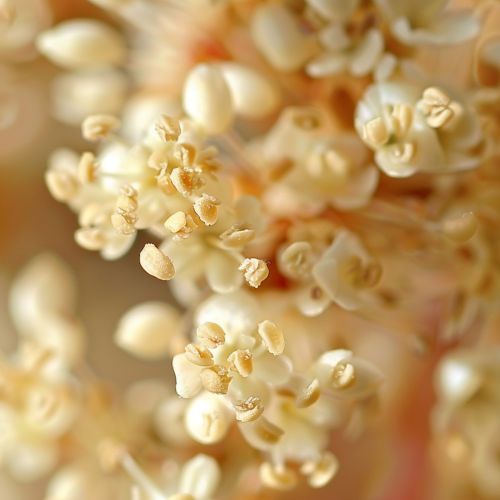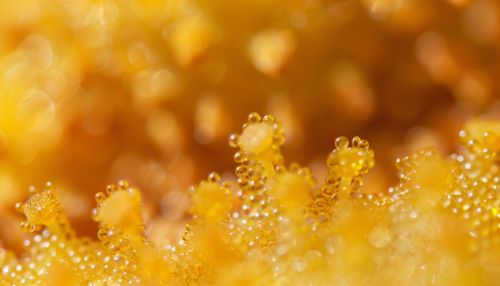Pollen
Introduction
Pollen is a fine to coarse powdery substance comprising pollen grains which are male microgametophytes of seed plants, which produce male gametes (sperm cells). Pollen grains have a hard coat made of sporopollenin that protects the gametophytes during the process of their movement from the stamens to the pistil of flowering plants, or from the male cone to the female cone of coniferous plants.


Formation and Structure
Pollen is produced in the microsporangia in the male cone of a conifer or other gymnosperm or in the anther of an angiosperm flower. Typically, pollen grains have a hard coat that protects the sperm cells during the process of their movement between plants. This coat has complex patterns that can develop into a variety of shapes and structures. There are two cells in the pollen grain, a generative cell that will divide into two sperm, and a tube cell that will grow into the pollen tube.
Pollen and Allergies
Pollen is one of the most common causes of allergies. Many people have adverse immune responses to pollen, most commonly hay fever. Symptoms of pollen allergy can include sneezing, itchy and watery eyes, and a stuffy nose. Some people may experience pollen allergy due to certain pollen types, and not others. This is because there are many different types of pollen - from different kinds of trees, grasses, and weeds. The type of pollen that people are allergic to varies depending on the region in which they live.
Pollen in the Ecosystem
Pollen plays a crucial role in the reproductive processes of many plants. It is an essential component of the ecosystem, and its presence and quantity can greatly affect the biodiversity of an area. In addition to being a necessary component for plant reproduction, pollen also serves as a food source for many insects, such as bees.
Pollen in Forensic Science
Pollen can also be used in forensic science. Because the types of plants from which pollen originates can be very specific to a certain area or time of year, pollen can provide clues about where and when a crime might have occurred.
